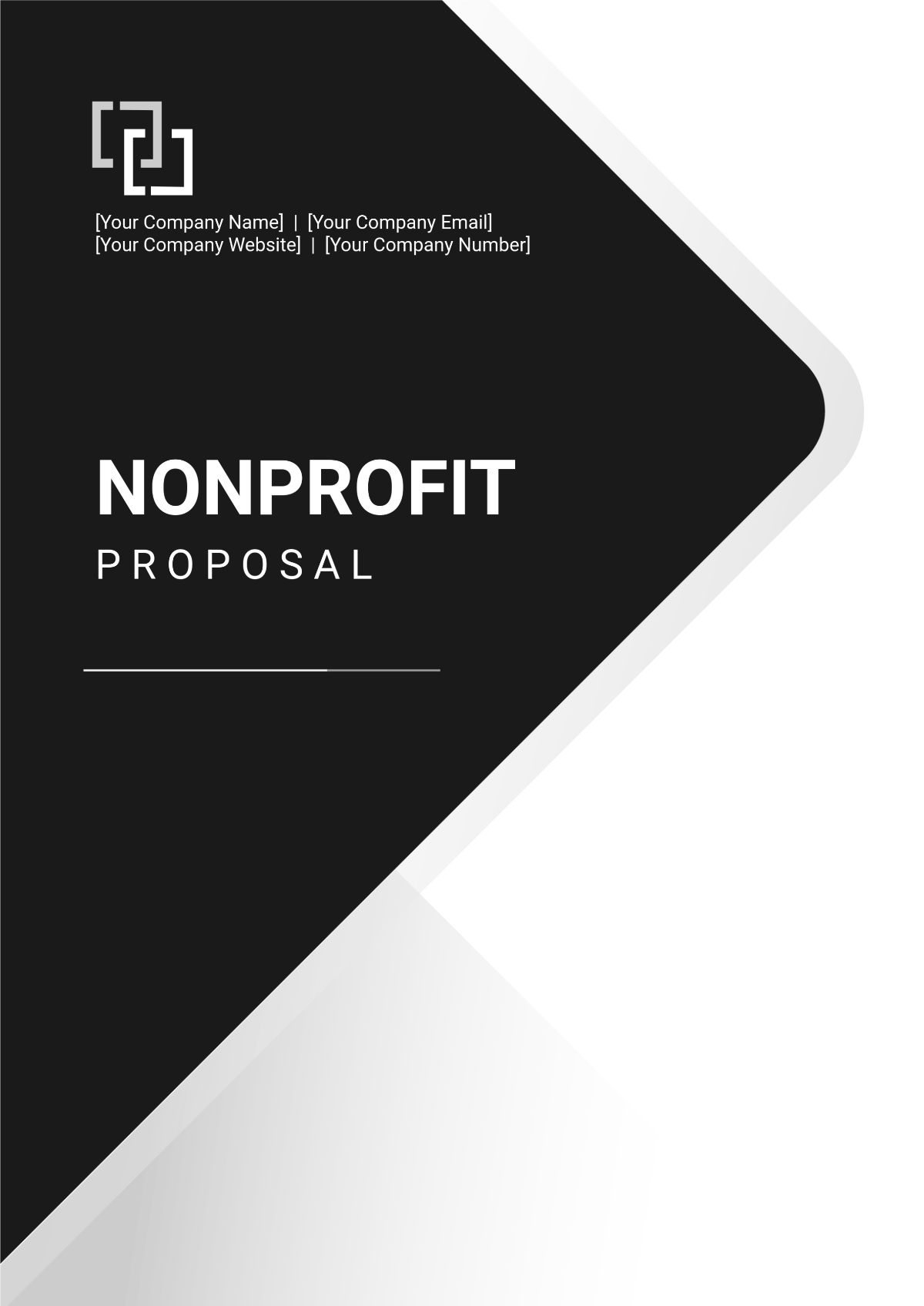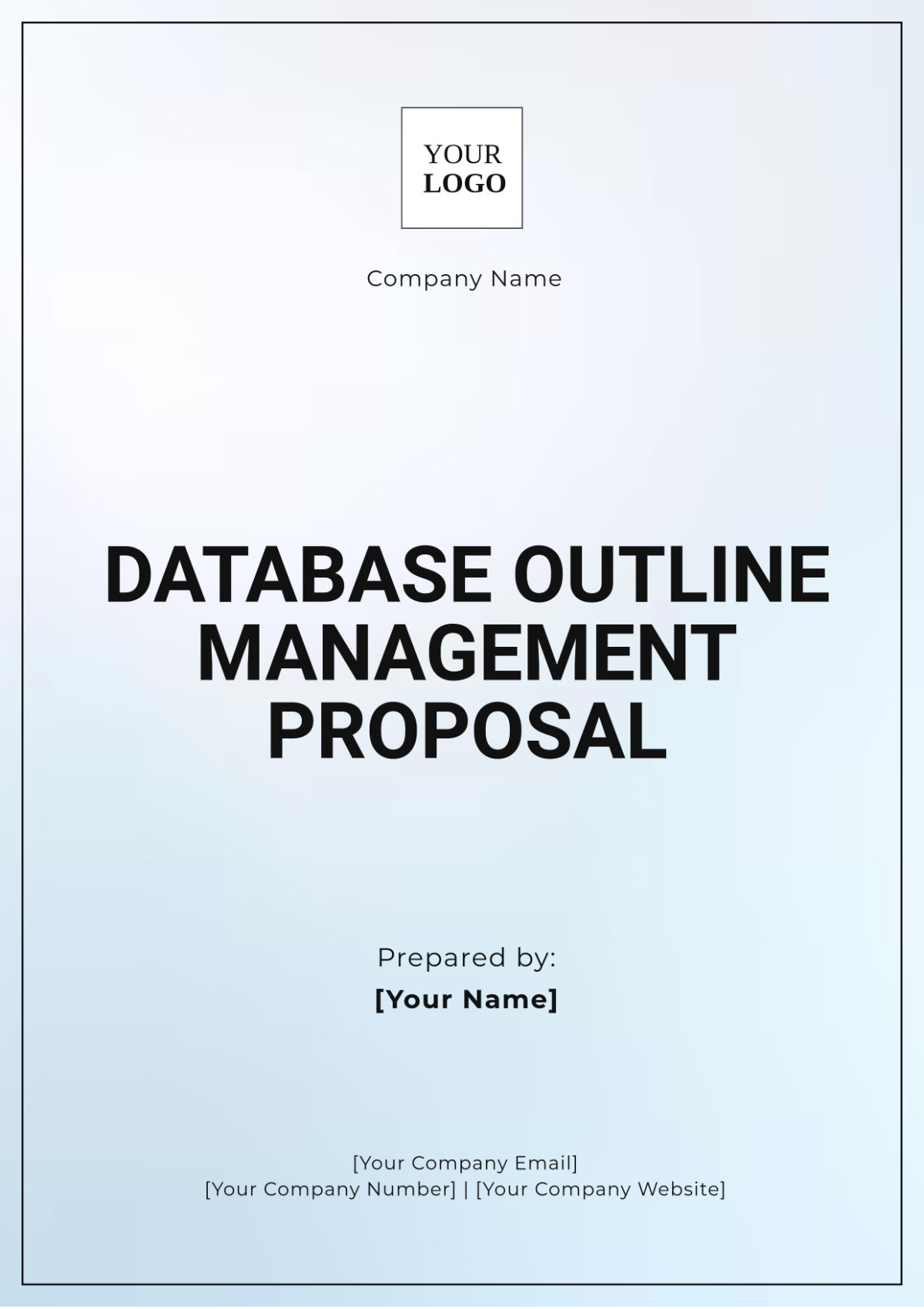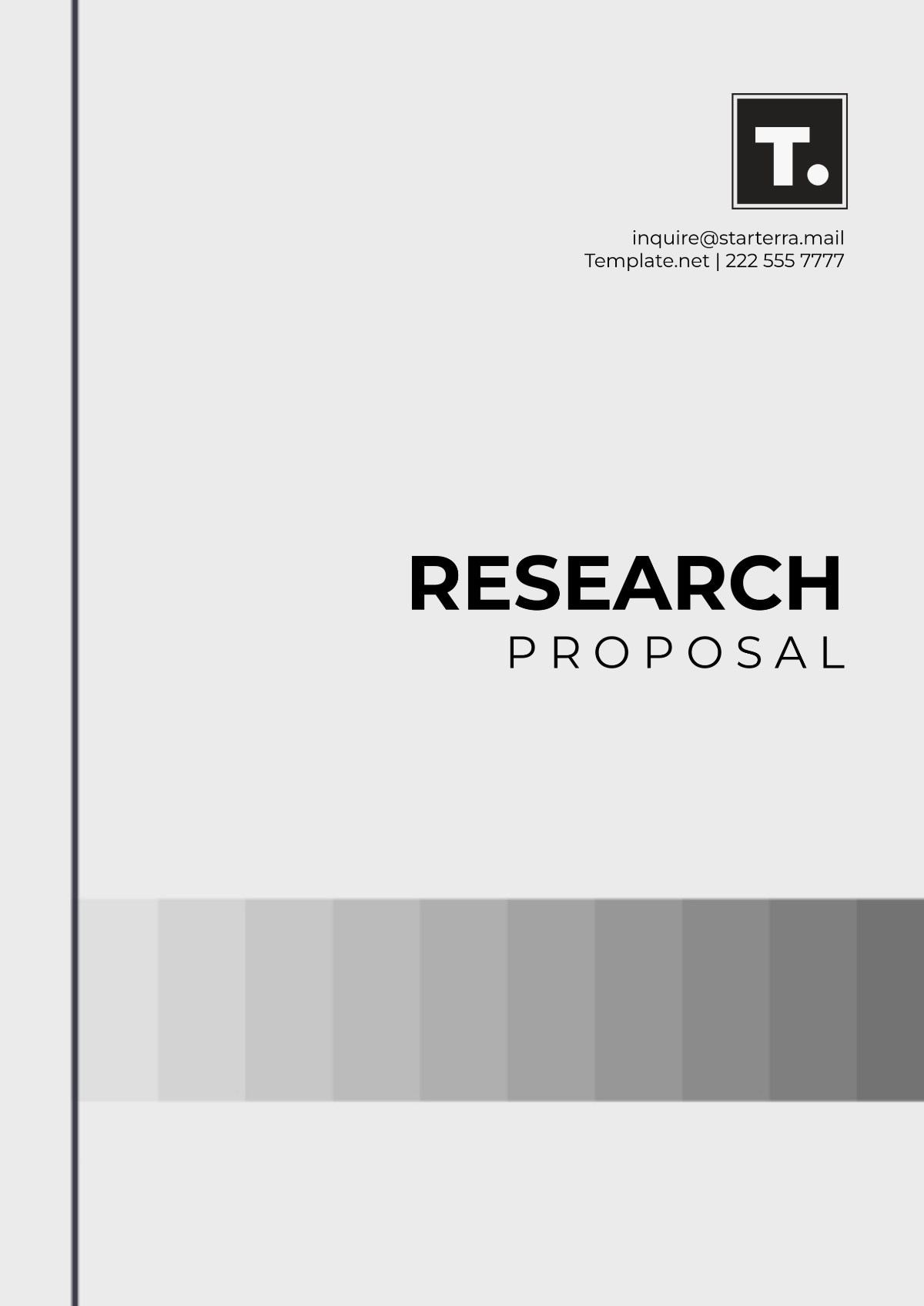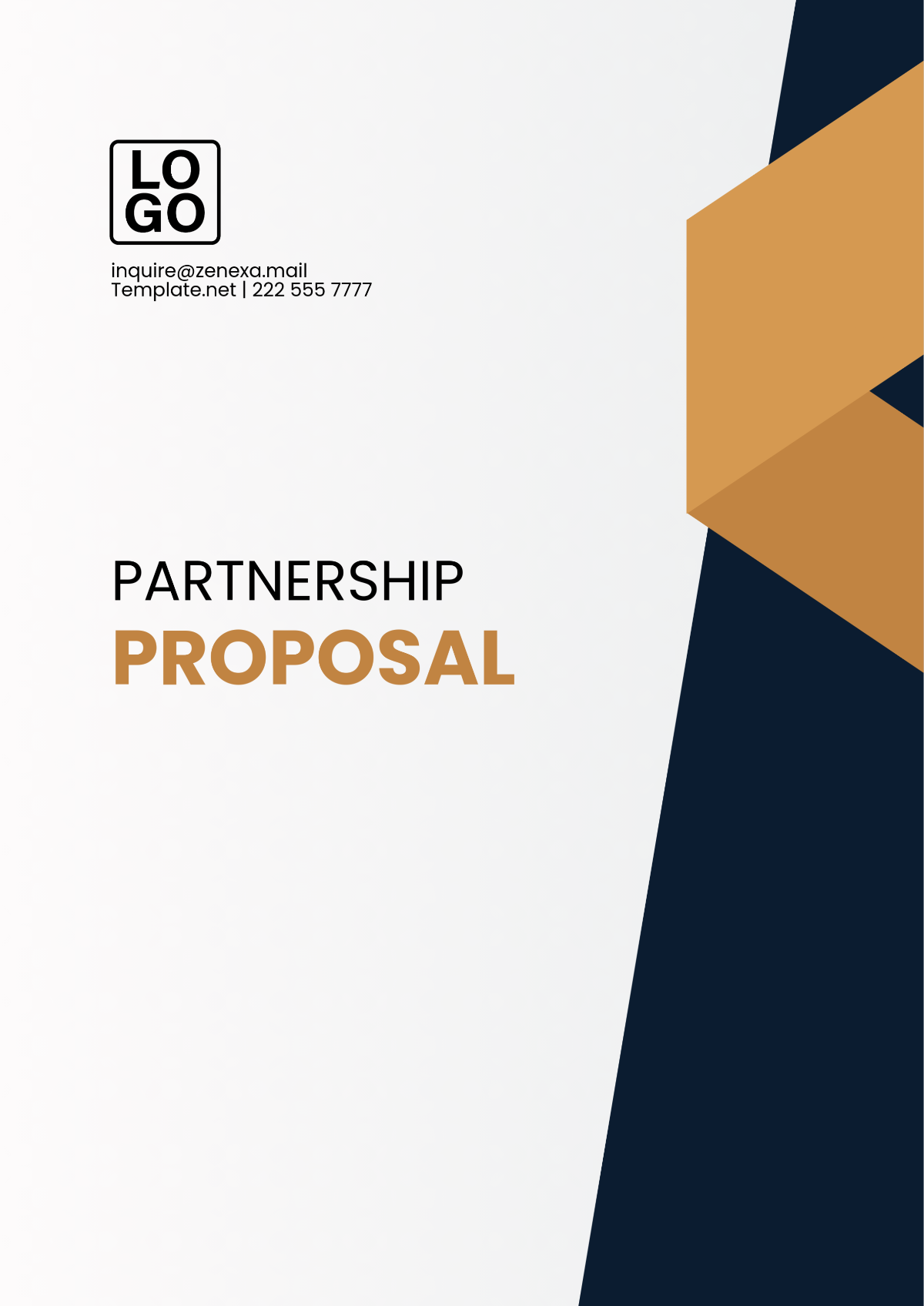I. Introduction
[Your Company Name] is committed to upholding the highest standards of administration and governance to ensure operational efficiency, regulatory compliance, and stakeholder satisfaction. In pursuit of this commitment, this proposal outlines a comprehensive framework for the development of administrative policies. These policies will serve as guiding principles to govern various aspects of our operations, promote transparency, mitigate risks, and enhance organizational effectiveness.
II. Purpose of Policy Development
The purpose of policy development at [Your Company Name] encompasses a comprehensive array of objectives aimed at fostering a culture of excellence, integrity, and compliance throughout the organization:
Standardization and Consistency: Administrative policies serve as the cornerstone for establishing uniform practices and procedures across all departments and functions within the organization. By providing clear guidelines and expectations, policies minimize ambiguity, reduce the likelihood of errors, and promote consistency in decision-making and execution.
Compliance and Risk Management: In an increasingly complex regulatory environment, administrative policies play a critical role in ensuring compliance with relevant laws, regulations, and industry standards. By incorporating legal requirements and best practices, policies mitigate the risk of non-compliance, penalties, and reputational damage, thereby safeguarding the organization's interests and maintaining stakeholders' trust.
Clarity and Transparency: Transparent governance is essential for building trust and fostering collaboration among employees, stakeholders, and the wider community. Administrative policies enhance transparency by articulating the organization's expectations, processes, and procedures in a clear and accessible manner. By promoting open communication and accountability, policies facilitate a culture of trust, fairness, and ethical conduct.
Efficiency and Operational Effectiveness: Well-defined administrative policies streamline operations, eliminate redundancies, and optimize resource allocation. By providing standardized frameworks for routine tasks, policies enhance operational efficiency, reduce waste, and maximize productivity. Moreover, clear policies empower employees to make informed decisions, resolve issues promptly, and adapt to changing circumstances, thereby enhancing overall organizational effectiveness.
Employee Empowerment and Engagement: Administrative policies empower employees by clarifying their roles, responsibilities, and rights within the organization. By providing guidance on acceptable behaviors, performance expectations, and avenues for professional development, policies promote employee engagement, satisfaction, and retention. Moreover, inclusive policy development processes that solicit input from employees foster a sense of ownership, pride, and commitment to organizational goals.
Risk Mitigation and Continuity Planning: Administrative policies address a wide range of risks, including operational, financial, reputational, and cybersecurity risks. By identifying potential threats, vulnerabilities, and control measures, policies enhance the organization's resilience and preparedness to mitigate adverse events and maintain business continuity. Moreover, policies facilitate the adoption of proactive risk management practices, such as internal controls, monitoring mechanisms, and contingency plans, to anticipate and mitigate potential disruptions.
Adaptability and Innovation: Administrative policies should be flexible and adaptable to accommodate evolving business needs, technological advancements, and market dynamics. By incorporating principles of agility and innovation, policies enable the organization to respond promptly to opportunities and challenges, seize competitive advantages, and drive sustainable growth. Moreover, policies should encourage experimentation, learning, and continuous improvement to foster a culture of innovation and adaptability across the organization.
Customer and Stakeholder Satisfaction: Administrative policies indirectly impact customer and stakeholder satisfaction by ensuring timely and reliable delivery of products, services, and information. By optimizing internal processes, policies enhance service quality, responsiveness, and satisfaction levels. Moreover, transparent and accountable governance practices instill confidence and trust among stakeholders, fostering long-term relationships and loyalty to the organization.
III. Needs Assessment and Gap Analysis
A thorough needs assessment and gap analysis have been conducted to evaluate the current state of administrative policies and identify opportunities for enhancement. This process involved comprehensive data collection, stakeholder consultations, and comparative analysis to ascertain strengths, weaknesses, and areas of improvement. The following key findings have emerged from the assessment:
Inconsistent Practices and Procedures: Across various departments and functions, there exists a notable lack of consistency in administrative practices and procedures. This inconsistency leads to inefficiencies, confusion, and disparities in performance standards. Certain departments may have developed their own ad-hoc procedures, resulting in duplication of efforts and suboptimal resource allocation. Addressing this issue requires the development of standardized administrative policies that establish clear guidelines and expectations for all employees, regardless of their department or role.
Unclear Roles and Responsibilities: The delineation of roles and responsibilities within the organization is not always clearly defined or communicated. This ambiguity can lead to overlaps in duties, gaps in accountability, and potential conflicts among team members. As a result, decision-making processes may be delayed or compromised, hindering overall organizational effectiveness. Developing explicit role descriptions and accountability frameworks within administrative policies is essential to clarify expectations and foster a culture of accountability and collaboration.
Regulatory Compliance Gaps: While the organization strives to comply with relevant laws, regulations, and industry standards, there are instances where administrative policies fall short of meeting compliance requirements. This poses risks such as legal liabilities, financial penalties, and reputational damage. A comprehensive review of existing policies against regulatory mandates is necessary to identify gaps and ensure alignment with current legal obligations. Additionally, establishing mechanisms for ongoing monitoring and updates is essential to adapt to evolving regulatory landscapes.
Limited Stakeholder Engagement: The process of policy development has traditionally been top-down, with limited input from frontline employees, external stakeholders, and subject matter experts. This lack of engagement results in policies that may not fully reflect the diverse needs, perspectives, and experiences of those affected by them. To address this gap, it is imperative to adopt a more inclusive approach to policy development that actively solicits feedback, encourages participation, and incorporates diverse viewpoints. Engaging stakeholders throughout the policy development lifecycle fosters a sense of ownership, buy-in, and commitment to the successful implementation of policies.
Documentation and Accessibility: There is room for improvement in the documentation and accessibility of administrative policies within the organization. While policies may exist, they are not always readily accessible or well-documented, making it challenging for employees to reference and adhere to them. Establishing centralized repositories, user-friendly formats, and version control mechanisms for policies enhances accessibility and ensures that employees have easy access to the most up-to-date information. Moreover, clear communication channels and training resources are essential to promote awareness and understanding of policies across the organization.
Adaptability to Change: The pace of change in the business environment requires administrative policies to be flexible and adaptable to evolving needs, technologies, and market conditions. However, existing policies may lack provisions for periodic review, updates, and adaptation, resulting in outdated or obsolete practices. Incorporating principles of agility, scalability, and continuous improvement into policy development processes enables the organization to respond effectively to emerging challenges and opportunities. Moreover, fostering a culture that embraces change and innovation empowers employees to proactively contribute to policy refinement and adaptation.
IV. Policy Development Process Overview
The policy development process at [Your Company Name] is designed to be systematic, inclusive, and responsive to the needs of the organization and its stakeholders. The process encompasses the following key stages:
Initiation: The policy development process begins with the identification of a need for a new policy or the revision of an existing one. This may be prompted by changes in laws or regulations, emerging organizational priorities, or feedback from stakeholders. The initiation stage involves defining the scope, objectives, and stakeholders involved in the policy development process.
Research and Analysis: Once the need for a policy is established, the next step involves conducting research and analysis to gather relevant information, best practices, and stakeholder input. This may include reviewing existing policies, conducting benchmarking exercises, consulting subject matter experts, and analyzing potential impacts on various stakeholders. The research and analysis phase provides the foundation for informed decision-making and policy development.
Drafting: Based on the findings from the research and analysis stage, a draft policy document is prepared. The drafting process involves translating the identified needs, objectives, and stakeholder input into clear, concise, and actionable policy provisions. Special attention is paid to language, formatting, and structure to ensure that the policy is accessible and understandable to its intended audience.
Review and Revision: The draft policy undergoes rigorous review and revision to solicit feedback from relevant stakeholders and subject matter experts. This may involve circulating the draft for internal review within the organization, as well as seeking input from external stakeholders, regulatory bodies, and legal counsel. Feedback received during this stage is carefully considered and incorporated into subsequent revisions of the policy document.
Approval: Once the draft policy has been refined through the review and revision process, it is presented for formal approval by senior management or the appropriate governing body within the organization. Approval signifies endorsement of the policy and authorizes its implementation. Depending on the nature and scope of the policy, approval may require sign-off from multiple stakeholders or levels of authority.
Implementation: With approval secured, the policy is ready for implementation. The implementation phase involves communicating the policy to relevant stakeholders, providing necessary training and resources to facilitate understanding and compliance, and integrating the policy into relevant operational processes and procedures. Clear guidelines are established for enforcing the policy, monitoring compliance, and addressing non-compliance through appropriate channels.
Monitoring and Review: Following implementation, the policy is subject to ongoing monitoring and review to assess its effectiveness, relevance, and impact. This includes tracking compliance metrics, soliciting feedback from stakeholders, and conducting periodic evaluations to identify areas for improvement. Based on the findings of monitoring and review activities, the policy may be revised, updated, or repealed to ensure alignment with organizational objectives and evolving needs.
Documentation and Communication: Throughout the policy development process, comprehensive documentation is maintained to track key decisions, revisions, approvals, and implementation activities. This documentation serves as a record of the policy's evolution and provides transparency and accountability to stakeholders. Additionally, clear communication channels are established to ensure that stakeholders are kept informed of policy developments, changes, and expectations.
V. Stakeholder Engagement and Consultation
Stakeholder engagement and consultation are critical components of the policy development process at [Your Company Name]. The following stakeholders should be actively engaged and consulted at various stages to ensure that policies reflect diverse perspectives, address relevant concerns, and garner support for implementation:
Employees: Frontline employees from all departments and levels of the organization play a vital role in policy development. Their firsthand experience and insights into operational challenges, workflow dynamics, and customer interactions provide valuable input for shaping effective policies. Employee engagement mechanisms may include focus groups, surveys, town hall meetings, and workshops to solicit feedback and address concerns.
Managers and Supervisors: Middle and senior managers, as well as supervisors, are responsible for implementing policies within their respective teams and departments. Their input is essential for understanding the practical implications of policies, identifying potential barriers to implementation, and garnering support from frontline staff. Consultations with managers and supervisors may involve one-on-one meetings, leadership forums, and departmental workshops to align policy objectives with operational realities and leadership priorities.
Senior Leadership: Executive leadership, including the CEO, COO, and other senior executives, provide strategic direction and oversight for policy development initiatives. Their endorsement and support are crucial for securing resources, overcoming organizational barriers, and prioritizing policy objectives. Engaging senior leadership may entail presentations, briefings, and strategic planning sessions to align policy goals with broader organizational strategies and objectives.
Human Resources: The Human Resources (HR) department plays a central role in policy development, implementation, and enforcement. HR professionals bring expertise in employment law, organizational behavior, and employee relations to ensure that policies are fair, equitable, and compliant with legal requirements. Collaboration with HR may involve consultations on matters such as employee rights, performance management, disciplinary procedures, and workplace accommodations.
Legal Counsel: Legal counsel provides guidance on the legal implications of proposed policies and ensures compliance with relevant laws, regulations, and industry standards. Collaboration with legal counsel may involve reviewing draft policies for legal accuracy, identifying potential liabilities and risks, and addressing legal considerations related to employee rights, privacy, intellectual property, and contractual obligations.
Regulatory Experts: Depending on the nature of the policies being developed, consultation with regulatory experts may be necessary to ensure alignment with industry-specific regulations, standards, and best practices. Regulatory experts provide insights into emerging regulatory trends, compliance requirements, and regulatory enforcement priorities that may impact policy development decisions.
External Stakeholders: External stakeholders, such as customers, suppliers, partners, industry associations, and regulatory agencies, may have a vested interest in the policies being developed. Consulting with external stakeholders helps to gather input, address concerns, and build consensus around policy objectives. Engagement with external stakeholders may involve stakeholder forums, industry conferences, public consultations, and collaboration on joint initiatives.
Subject Matter Experts: Subject matter experts within and outside the organization provide specialized knowledge and insights relevant to specific policy areas. Consultation with subject matter experts helps to ensure the technical accuracy, feasibility, and effectiveness of proposed policies. Subject matter experts may include specialists in areas such as finance, IT, cybersecurity, health and safety, environmental sustainability, and diversity and inclusion.
VI. Policy Drafting Guidelines
Policy drafting at [Your Company Name] adheres to the following comprehensive guidelines to ensure clarity, effectiveness, and compliance:
Clarity and Simplicity: Policies should be written in clear, concise language that is easily understandable to all stakeholders, regardless of their level of expertise or background knowledge. Avoid technical jargon, complex terminology, and lengthy sentences that may obscure meaning or confuse readers. Use straightforward language and provide explanations or examples where necessary to enhance comprehension.
Consistency: Ensure consistency in language, format, and style across all policies to facilitate ease of reference and understanding. Use standardized templates and formatting conventions to maintain uniformity and coherence. Align terminology and definitions with established organizational standards to avoid confusion and ambiguity.
Relevance and Scope: Clearly define the scope and applicability of each policy to delineate its boundaries and clarify who and what it covers. Clearly articulate the purpose, objectives, and intended outcomes of the policy to provide context and rationale for its provisions. Avoid including extraneous or unrelated content that may detract from the policy's focus or dilute its effectiveness.
Compliance: Ensure that policies align with relevant laws, regulations, industry standards, and organizational policies to mitigate legal and regulatory risks. Consult legal counsel and regulatory experts as needed to verify compliance and address any legal considerations or requirements. Incorporate references to applicable statutes, regulations, or standards to provide clarity and authority for policy provisions.
Flexibility and Adaptability: Policies should be flexible and adaptable to accommodate changing circumstances, emerging trends, and evolving organizational needs. Avoid overly prescriptive language or rigid frameworks that may impede innovation, creativity, or responsiveness. Allow for reasonable exceptions, waivers, or deviations where necessary to address unique circumstances or business requirements.
Clarity of Roles and Responsibilities: Clearly define the roles, responsibilities, and accountabilities of all stakeholders involved in implementing, enforcing, and complying with the policy. Clearly articulate who is responsible for what, when, and how, to avoid confusion or ambiguity. Use action verbs and specific language to delineate tasks, expectations, and performance standards.
Transparency and Accountability: Promote transparency and accountability by clearly outlining the processes, procedures, and decision-making criteria governing the policy. Specify the mechanisms for monitoring, reporting, and enforcing compliance with the policy, as well as the consequences for non-compliance. Ensure that procedures for appealing or challenging policy decisions are transparent and accessible to affected parties.
Accessibility: Make policies easily accessible to all stakeholders through centralized repositories, online portals, or other communication channels. Ensure that policies are organized, indexed, and searchable to facilitate easy navigation and retrieval of relevant information. Provide summaries, FAQs, or quick reference guides to highlight key points and aid in comprehension.
Review and Revision: Establish procedures for regular review, evaluation, and revision of policies to ensure their ongoing relevance, effectiveness, and compliance. Specify the frequency and criteria for policy reviews, as well as the process for soliciting feedback and incorporating changes. Engage relevant stakeholders in the review process to gather diverse perspectives and identify areas for improvement.
Version Control and Documentation: Maintain comprehensive records of policy development, revisions, approvals, and updates to track the evolution of policies over time. Establish version control mechanisms to manage changes, revisions, and updates systematically. Clearly document the rationale, decisions, and considerations underlying each policy to provide transparency and accountability.
VII. Review and Approval Procedures
A structured review and approval process will be implemented to uphold the integrity and quality of policies. This process will involve:
Initial Review: Evaluation by a designated policy development team to assess alignment with objectives and standards.
Subject Matter Expert Review: Feedback solicitation from relevant experts to ensure technical accuracy and relevance.
Legal Review: Examination by legal counsel to verify compliance with applicable laws and regulations.
Senior Management Approval: Endorsement by senior leadership or the appropriate governing body to authorize implementation.
Documentation and Version Control: Maintenance of comprehensive records to track revisions, approvals, and updates.
VIII. Implementation and Rollout Strategy
The implementation and rollout of policies will be carefully planned and executed to maximize effectiveness and minimize disruption. Key components of the strategy include:
Communication Plan: Clear and targeted communication to inform stakeholders about the new or revised policies, their rationale, and implications.
Training and Development: Provision of training sessions, workshops, and resources to educate employees on policy requirements and procedures.
Compliance Monitoring: Establishment of mechanisms to monitor adherence to policies and address non-compliance through corrective action and support.
Feedback Mechanisms: Creation of channels for stakeholders to provide feedback on policy implementation and suggest improvements.
Continuous Improvement: Commitment to ongoing evaluation and refinement of policies based on feedback, changing needs, and evolving best practices.
IX. Communication Plan
An effective communication plan will be developed to ensure that stakeholders are informed and engaged throughout the policy development and implementation process. The communication plan will include:
Key Messages: Clear and consistent messaging about the purpose, content, and implications of policies.
Communication Channels: Utilization of diverse communication channels, including email, intranet, newsletters, and meetings, to reach different audiences.
Timelines: Establishment of timelines for communication activities to ensure timely dissemination of information.
Feedback Mechanisms: Provision of avenues for stakeholders to ask questions, provide input, and express concerns about policies.
Follow-Up Communications: Regular updates and reminders to reinforce policy awareness and compliance after implementation.
X. Conclusion
In conclusion, the development of comprehensive administrative policies at [Your Company Name] is essential to promote consistency, compliance, and effectiveness in our operations. By following the structured framework outlined in this proposal and engaging stakeholders throughout the process, we aim to create policies that not only meet regulatory requirements but also reflect the values and priorities of our organization. Through proactive communication, training, and continuous improvement, we will ensure successful implementation and ongoing adherence to these policies, thereby fostering a culture of accountability, transparency, and excellence across the organization.
















































